Private houses built of bricks or blocks are often plastered outside to protect walls from moisture and mechanical damage, reduce heat loss, and improve the appearance.
The last problem in this case is only partially solved: the surface of the walls becomes even, but gray and dull. However, facade paints for plaster easily cope with this problem, allowing you to give the house any color and design.
The main advantage of facade paints, in addition to giving the building an aesthetic appearance, is their ability to preserve the positive properties of plaster, to protect it from all kinds of negative influences.
What properties should the material have?
High-quality facade paint on plaster must meet the following requirements:
- Be vapor permeable, do not close the pores of the plaster with an impermeable film. Otherwise, the condensate that collects on the surface of the walls will accumulate under this film, without evaporating and leading to the multiplication of fungi and the destruction of the paint and varnish layer;
- Be weather resistant. First of all, do not let moisture from the environment pass through, preserve its properties under the influence of frost, sunlight, and a sharp change in temperature;
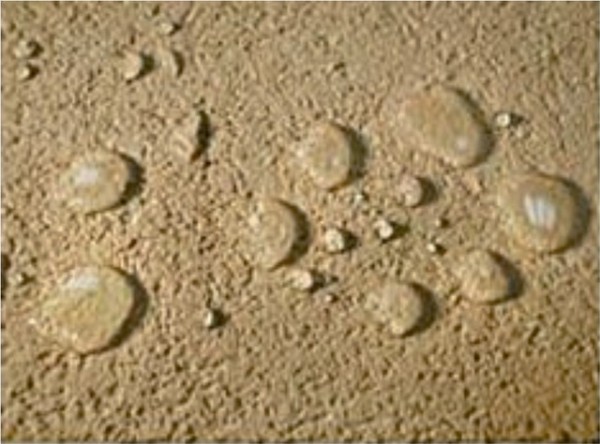
- Do not fade in the sun, do not change color under the influence of UV rays;
- Have good adhesion, that is, increased adhesion to the plaster and ensure the strength of the coating;
Note. The quality of adhesion depends not only on the characteristics of the paint, but to a greater extent on the preparation of the surface for painting.
- Resist mechanical damage - scratches, chips, etc .;
- Be easy to apply, dry quickly enough and gain strength;
- Stain-repellent or easy to clean without loss of decorative effect.

Types of facade paints
According to their decorative properties, such paints differ in color and degree of gloss or mattness. Moreover, most species lend themselves to tinting - the introduction of pigment into the bulk to obtain the desired shade.
Painting a plastered house outside is most often done with matte paints, which well hide minor defects in the coating, while the gloss only emphasizes them.
They also differ in composition, base material:
- Facade acrylic paint- the most popular of the existing ones. The binder in it are acrylic polymers, which perfectly protect the plaster from weathering. The composition can be diluted with water, tinted. It does not have a pungent odor, does not interfere with gas exchange, and prevents the formation of mold. Another important advantage is the low price in comparison with other types of similar materials.
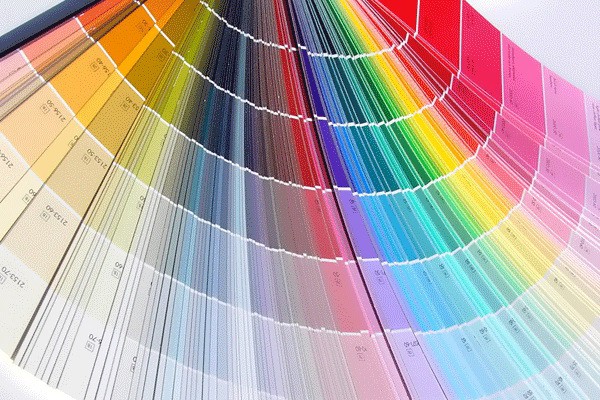
- Facade silicone paint for plaster- one of the highest quality and most modern formulations for. The synthetic resins included in its composition reliably protect them from atmospheric moisture and provide reliable adhesion to a rough plastered surface.
Note. The cost of silicone compounds is much higher than acrylic, but at the same time it is much more durable. Provided high-quality painting in compliance with all technological requirements, the decorative layer will last up to 25 years, while the service life of the acrylic coating is no more than 10 years.
- Silicate paints based on liquid glass have a unique ability to penetrate cracks, gluing them together and hiding the imperfections of the plaster layer. Due to their high vapor permeability, they are often used as a decorative coating when creating systems for external thermal insulation of facades with mineral wool insulation.
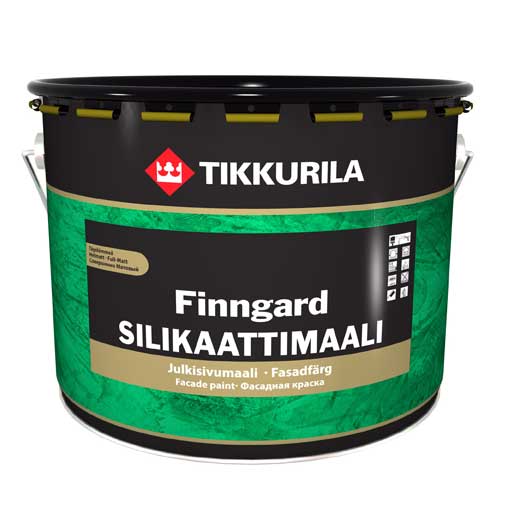
- Perchlorovinyl facade paint is a suspension of coloring pigments in a solution of perchlorovinyl resin. Despite the low cost, saturated colors and the possibility of application even at negative air temperatures, it is rarely used for. Its disadvantages include flammability, pungent odor and low plasticity, due to which the dried paint cracks and crumbles at the slightest deformation of the facade.
Application
Before painting the outside of the plastered house, all other installation and rough finishing work must be completed. The work is carried out in dry weather at an air temperature of at least 8-10 degrees.
Intense heat is also not welcome, as it causes the paint to dry too quickly with the loss of some of its physical properties.
How much paint is required
Having decided on the type of paint, you should decide how much to buy. This material is not the cheapest, so it is too wasteful to acquire an excess amount. On the other hand: if it is not enough, then you will have to buy it, risking not getting into the color, which may be slightly different depending on the batch.
The required amount of paint is calculated based on the following parameters:
- Consumption per square meter;
- The number of layers.
In turn, the consumption depends on the smoothness and porosity of the plaster: the less rough and porous the surface is, the less it will be. As a rule, the instructions from the manufacturer contain information about this parameter, you just have to multiply it by the area of the facades to be painted.
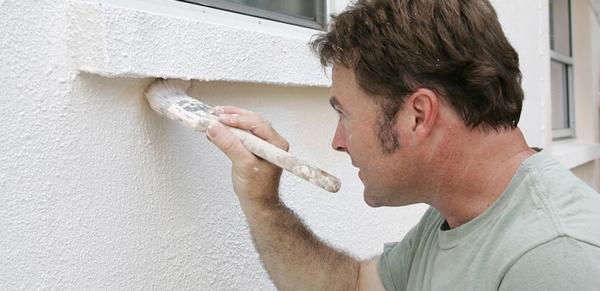
Now for the number of layers. There should be at least two of them: a primer and a covering. The composition for the primer layer can be diluted with water or solvent, the amount of which should not exceed 5% of the paint volume.
A two-layer paint system is applied to even and smooth surfaces. If they are porous and rough, it is advisable to apply a third coat to further protect the surface from moisture penetration.
Note. It is allowed to apply one layer of paint, but only if the plaster was made with a tinted polymer mixture in the color of the future facade.
Each of the layers is applied only to the dried out previous one. Drying times are also indicated by the manufacturer and depend on environmental conditions.
Surface preparation
The most important thing in the process of painting facades with your own hands is high-quality surface preparation.
Mandatory requirements:
- The plaster must be dry and sound. It is not allowed to shatter when exposed to a brush or roller;
- The substrate must be free of dirt, oil stains, dust, layers of old paint. If there are metal parts on the facade, they are cleaned from rust;
- The prepared surface must be primed to increase adhesion with paint.
Start painting immediately after the primer has dried (see). Otherwise, dust will again settle on the walls, which will impair the adhesion of materials.
Painting
There is not much to tell about the process itself. It is carried out with a brush, roller or spray gun. When painting by hand, each next layer is applied in a direction perpendicular to the previous one.
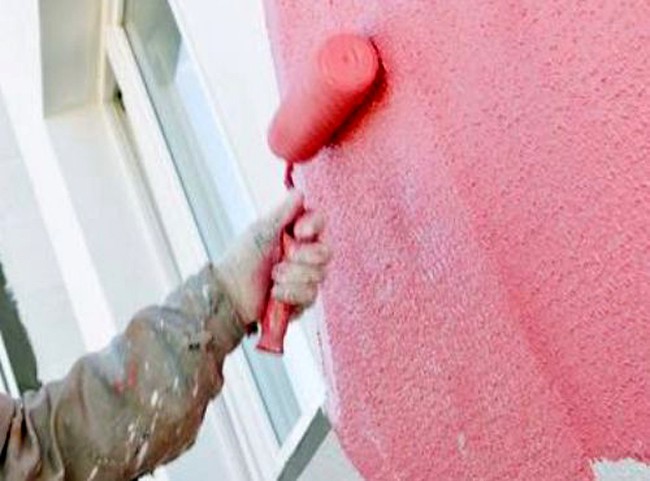
Advice. When using a spray gun, be sure to protect windows, doors and façade elements from paint.
Conclusion
If you have chosen plastering and painting from all types of facade decoration, buy high-quality materials so that you do not think about repairs in the next 10-15 years. Good paint will not only decorate your home, but also protect it from the negative influences of the environment.
In order not to make mistakes, watch the video in this article, which describes the whole process in detail.




